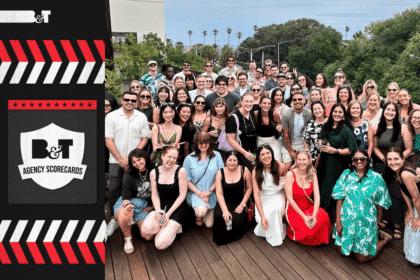Few technologies are as hotly contested right now as mobile payments. Financial institutions, telcos, retailers and even Google are all attempting to crack the market. Yet for now the technology is immature and adoption remains low. So who will win the race? And what will be the winning platform? Open or closed? While it’s far too early to call a winner, the platform discussion always attracts strong perspectives.
Why the future of mobile payments is open: ‘Scale for retailers AND consumers’.
By James Duthie
Here we go again: different technology, same debate… open vs closed. Of course, we’ve been here before, many times. Perhaps most famously between Mac and PC. Indeed, proponents of the closed approach will point towards Apple as the benchmark in closed technology success.
Yet when we cast our eyes past Apple, we see recent victories skew towards the open camp. Content management systems were once built upon proprietary technology, yet platforms such as WordPress, Magento and Umbraco are now prevalent (if not dominant). Firefox initially challenged Internet Explorer in the browser market with an open source product, only to be surpassed by Chrome (another open product). And despite Apple’s huge success, Android has won the market share battle.
Indeed, Apple’s own success in the mobile market was arguably driven by opening the development platform for iPhone. It was the App Store that truly unlocked the enhanced utility of the handset.
In each case, victory for the open platform has been driven by one key factor – scale. Scale of development resources (an open source development community) enabled each platform to rapidly scale functionality, and subsequent value, for end users.
At this early stage in its lifecycle, scale is precisely what the mobile payment industry is lacking. Simply put, there are too many solutions. From Kaching to Google Wallet to Visa (among others), market fragmentation is preventing mainstream adoption at both retailer and consumer level. And without scale at a retailer level, value for consumers is severely inhibited. Mobile payments can only succeed when they are as universal as cash and credit (at a minimum). Consumers won’t adopt payment method that is less convenient.
For their part, retailers have recognised the issue of scale. In particular, a band of mega American retailers recently formed MCX, an alliance that aims to pool resources to develop a retailer-friendly mobile payment solution. Yet unless retailers can move beyond traditional competitive rivalries, MCX is simply another fragmented solution in the market. Having invested funds into the MCX platform, will a company like Lowes allow Home Depot in to the party? Unlikely. And if they don’t, MCX isn’t the best solution for consumers.
Consumers crave simplicity. We have four main banks. We use Amex, Visa or Mastercard. And when mobile payments take off, we’ll want a handful of choices at most. Expecting consumers to use different solutions/applications for different retailers creates consumer inefficiency. It’s harder than cash or credit. It doesn’t scale. And to be honest, retailers have bigger problems to solve in reinventing retail, rather than attempting to reinvent the payment industry.
It is the solution that meets consumer needs AND retailer needs than will ultimately win the mobile payments battle. For now, retailers and financial institutes are primarily looking to protect their territory with closed solutions. Which is why solutions are fragmented and adoption remains low.
Universal accessibility is the key. And an open solution is most likely to achieve that. Which is why the winning solution will be open.
Why the future of mobile payments is closed: ‘Cutting out the middleman’.
By Athan Didaskalou
We use our mobile phones for just about everything – search, entertainment, shopping and more. However, the state of mobile payments across the globe can be described as a schmozzle. Why you may ask?
Simply, it’s due to a mix of legacy systems, regulations, and slow hardware uptake that has led to niche but fragmented solutions, none of which has reached mass adoption.
Mass adoption is arguably the biggest problem, and I believe that out of five possible groups that have the potential to successfully drive mobile payment uptake (banks and credit card companies; telcos; governments; technology companies like Apple and Google; and merchants), only one can do it best.
Merchants
Without boring you with an analysis of how each body can contribute to mass adoption of mobile payments from customers to merchants, I believe it boils down to one simple thing: a transaction only requires a customer and a merchant. No banks, no credit card companies, no carriers, no regulators, no start-ups: no middlemen. Just merchants.
Mobile payments are the next step for customers and merchants to create a cashless society via technology. And if there’s one thing technology has done well in the last 20 years, it’s cut out the middleman.
We’re living in a world turning to simplification and reductionism because technology and software have allowed us to alleviate reliance on additional parties and do the things we never knew how to, autonomously. Large merchants see the opportunity in taking ownership of their customers and forgoing the third-party reliance of yesteryear.
Welcome to the era of closed-loop payments where merchants are simplifying the purchase user experience by offering their own system every time you transact with them, all without involving third-party financial institution intermediaries – the ultimate user experience.
The best part? You can leave the DeLorean in the garage, the future is already upon us. US-based MCX is a mobile payments platform team-up of some of the biggest retailers in the world who are developing a closed-loop merchant system because they realised that the only way to beat the middlemen is to band together in a closed platform. Your Apple ID for all those apps you download? Yep, closed loop. The convenience you get from Amazon 1-click purchases? Correct, that’s closed too. Ever buy a coffee from Starbucks with a gift card? Think of that. But on your phone. It’s closed, and it’s making them millions.
So why are these forward-thinking U.S. merchants throwing time and money into cutting out the middlemen and taking ownership of the payments process? They are the first of many because of the shift in retail forces. As Porter would tell you, business and people work in moving forces, and there are three main forces contributing to the shift towards closed-loop systems in mobile payment ownership from retailers:
1. Internal forces to minimise costs. There’s strong motivation by merchants to find lower-cost incentives to process payments, and anything that makes the margin fatter in a global retail market is a plus.
2. Competitive forces for information. The world runs on the value of data. A closed loop system means merchants have single ownership of customer data and experience; no dilution with third party entities.
3. Social forces for incentives. In exchange for loyalty, people want incentives from their merchants. A closed loop system ensures control and focus, with larger margins contributing to better rewards and subsidies.
These three forces are contributing to the push for merchants to stop relying on third parties and start laying the foundations of owning the entire experience.
The most innovative companies have already shifted to cut out the middlemen. The future of mobile payments is one of closed-loop systems because it’s the only system that benefits the two parties that matter the most: merchants and customers. Closed loop systems: customer experience focused, bottom line driven.
In summing up, closed loop platforms have the necessary incentive of driving better financial returns; whilst open source means that merchants can focus on what they do best: retailing.
James Duthie is a senior strategist at DT and Athan Didaskalou is a strategist at DT.








